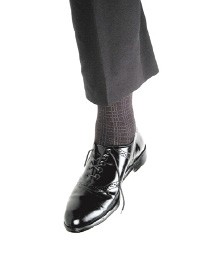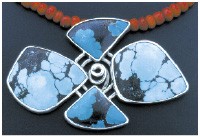After making movies in obscurity for decades, using cheap equipment and a cast of friends and co-workers, Camden, Arkansas, native Phil Chambliss has become a minor cause célèbre on the film-festival circuit. Chambliss, who has written, directed, shot, edited, and scored 27 films over the past three decades, received his first public screening at the 2004 Nashville Film Festival and was celebrated at the British Film Institute’s 50th London Film Festival last year.
Last year, three of Chambliss’ films — Shadow of the Hatchet Man, Mr. Visit Show, and The Devil’s Helper — screened at the Indie Memphis Film Festival. This week, Indie Memphis is sponsoring a screening of the same program at the Brooks Museum of Art.
Dubbed a “folk-art filmmaker,” Chambliss’ amateurish, rural-based, borderline-surreal short films are so odd, there’s a temptation to file them under “so bad they’re good,” if not just plain bad. There’s also a temptation to impart some kind of authorial vision to the work when simpler explanations are more apt to be correct. At the Indie Memphis screening, for instance, one well-meaning attendee asked Chambliss about the “motif” of “the duel” in his films. Chambliss’ confusion at the question made it clear that the unpretentious filmmaker just liked Westerns. Another asked a presumptuous question about casting strategy when it was equally clear that Chambliss uses whatever friends, family members, or acquaintances are willing to spend a bit of time in front of his camera.
But there is something real happening in Chambliss’ work, at least in the three examples being screened at Indie Memphis.
The 1982 “thriller” Shadow of the Hatchet Man is the most memorable of the bunch. It’s shot in gloriously grimy 8mm black and white, which lends an effectively nasty tone to an already disreputable tale of a hatchet-wielding killer and the cheating husband who sees an opportunity to off his wife in a copycat murder. From the pungent, intentionally loony, and well-observed dialogue (“I can see she was a cute li’l ole girl,” a newscaster — played by Chambliss — drawls during a report on the latest hatchet-killer victim) to such memorably odd images as a bare-chested sheriff reporting from in front of an Arkansas flag, Shadow of the Hatchet Man is hard to forget. It also ends with a moment of accidental grace when a dog runs into the frame — chasing, presumably, the pickup truck the camera operator is shooting from — and the film drops its ostensible human subject to follow the dog.
The other two shorts being shown as part of this program aren’t quite as absorbing but are still memorable. Mr. Visit Show (2002) depicts a reporter investigating rumors that the “Bird-Mart Day Care Center for Birds” is using sleeping pellets instead of seed and ends with probably the most hilariously unstrenuous fistfight in movie history.
Even better is 1986’s The Devil’s Helper, in which two good ole boys out in the woods run into one of Satan’s minions and cut a deal for expanded hunting privileges. The Devil’s Helper opens with a still shot of a giant buck, presenting the deer as a creature of awe, like a god. If you grew up around the culture of rural deer hunting, you’re liable to react to the image with a laugh of recognition.

